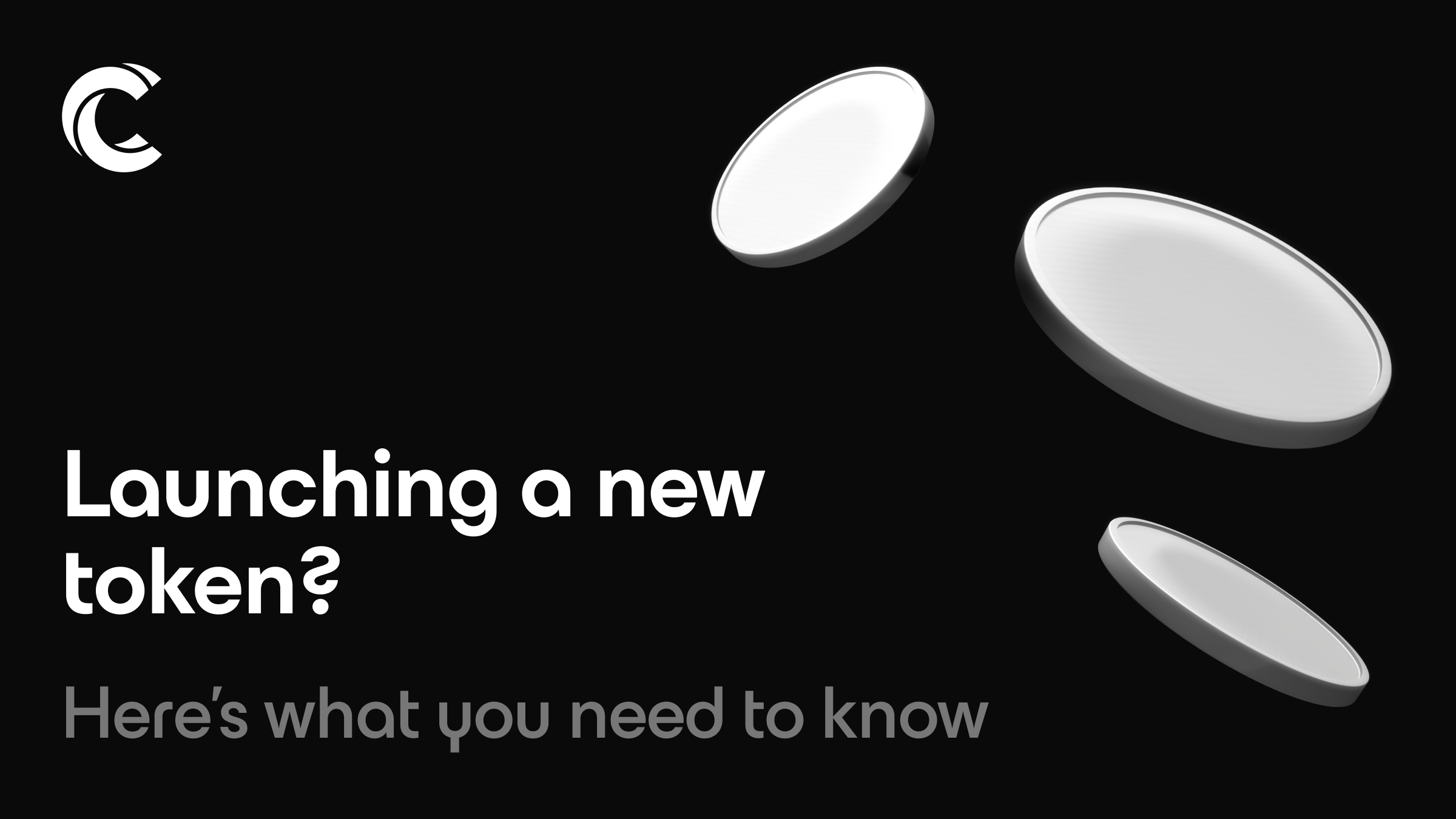So You Want to Launch a New Token. Here’s What You Need to Know.

When it comes to launching a token, there are many considerations that go into developing a successful strategy: from community building and token economics to legal, operational, and security considerations. In this blog post, we will explore four key considerations projects should consider prior to launching a token:
- Community building
- Token economics
- Custody
- Security
Let’s dive in.
1. Community Building
Before launching a token, it's critical to focus on building a strong community foundation to propel your project for the long-term. Community building strategies between Layer 1 and Layer 2 protocols differ from the strategies that can be deployed by Dapps because their stakeholders have different needs:
Layer 1 and Layer 2 Network Community Building
- For L1 and L2 networks, the initial key stakeholders are the validators securing the network and developers building applications on the network to attract end users for different use cases (e.g. DeFi, social, gaming). L1’s and L2’s can run incentivized testnets prior to mainnet launch to attract validators to their networks and then distribute token rewards to those validators once the mainnet goes live. To ensure that projects are adhering to anti-money laundering regulations to the best of their ability, projects should run KYC and KYB checks for all testnet participants that will receive rewards.
Dapp Community Building
- The key initial stakeholders of a Dapp project are the early users engaging with the application. Dapps can run incentivized testnets to attract and reward early adopters who provide feedback on the product. Running testnets enables project teams to quickly iterate on product and identify key features that resonate with the end user.
Another important part of community building for both Dapps and protocols is investing in user (for Dapps) and developer (for L1s/L2s) education. Learning tools such as Crypto Zombies, a Solidity coding education tool, helped onboard a number of developers to the Ethereum ecosystem. Similar types of applications exist for other ecosystems such as the recent beta launch of Area-52 for the Cosmos ecosystem where developers can master CosmWasm and smart contracts in the Rust language.
2. Token Economics
In advance of launching a token, projects should think deeply about token utility, supply allocations, and regulatory considerations. The token should serve as a core component for the protocol to function and promote decentralization.
For proof of stake networks, validators securing the network stake their tokens in exchange for block rewards. For Dapps, tokens’ primary use case thus far has been governance over the protocol by a decentralized group of stakeholders. If a token’s main utility for a Dapp is governance, we recommend that the project focus on finding product-market-fit prior to launching a token. Bear markets particularly require projects to be nimble and pivot to generate traction.
Moreover, token supply allocations have recently shifted more towards the team/investors/insiders and away from the community, which has been a detrimental development to the crypto ecosystem over the past couple of years. Crypto has the potential to drive incredible network effects with prudent token economics, but if too much supply is allocated to insiders, it will be difficult to attract and reward new stakeholders to further bootstrap the network.
Early retail token holders and purchasers should not feel like they are VC’s exit liquidity.
Teams should work closely with reputable legal counsel when developing their token economics due to the legal ambiguity of digital asset laws and regulations. While there is still significant “gray area” from a legal perspective, strong legal counsel will reduce a project’s regulatory risk and increase the likelihood of its long-term success.
3. Custody
Operations are another important pre-launch consideration. This includes establishing relationships with custody providers, which provide a number of strategic benefits such as deeper liquidity for the token across centralized and decentralized exchanges, staking services, and simplified investor distribution.
Deeper liquidity across multiple exchanges for a token is important because the token will have less price sensitivity when sales or purchases are executed. Custody providers also help facilitate staking capabilities on centralized exchanges, giving users the simple option to stake directly on a platform like CoinList instead of transferring assets on-chain to stake on a decentralized network where the user experience is typically less than ideal.
Further, many projects have raised multiple private rounds with different valuations and different vesting schedules across their investor base, which complicates investor distribution from an operational standpoint.
Instead of teams spending time and resources on handling distribution themselves, projects can outsource early investor distribution to CoinList who works with the custody provider to distribute tokens to investors after mainnet launch. This way, project teams can focus more on the product and building out their ecosystems.
4. Security
In addition to custody and exchange strategies, builders must focus on protocol security leading up to mainnet launch and thereafter. Projects should undergo multiple security audits with reputable providers before launching mainnet and offer bug bounty programs to identify potential smart contract flaws and exploits. Hacks have accounted for billions of dollars of lost funds, and long-term user adoption will likely not happen for protocols with subpar security oversight.
Launching a token is a complex process that requires in depth planning and attention to detail. By focusing on community building, token economics, custody, and security considerations, projects can increase their chances of success and drive mainstream adoption.
To learn more about how we can best support your crypto project, reach out to us today »
Legal notice
This blog post is being distributed by CoinList Global Services Ltd., dba “CoinList,” or one of its subsidiaries. CoinList does not provide—and this post shall not be construed as—investment, legal or tax advice. This blog post and use of the CoinList website is subject to certain disclosures, restrictions and risks, available here and here.
